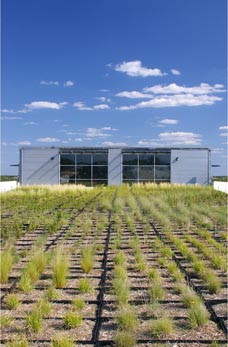 China is one of the fastest growing economies in the world and suffers the effects of that rapid growth. Air pollution and storm water runoff effect their major and minor cities.
China is one of the fastest growing economies in the world and suffers the effects of that rapid growth. Air pollution and storm water runoff effect their major and minor cities.The Chinese government has acknowledged these problems and has taken steps to improve the situation. One way is through green roofs.
Shanghai has defined targets for the number green roofs (details here) and design firms are lining up for cities' worth of opportunity.
Outside of Shanghai, in the Songjiang district, Atkins has designed the "Songjiang Garden City," with a resort as the focal point. According the Greenroofs.com:
The innovative design of the 400-bed resort hotel stands two levels higher than the rock face of the 100 metre deep quarry and includes underwater public areas and guestrooms... Sustainability is integral to the design ranging from using green roofing for the structures above the ground level to geothermal energy extraction.
As this is part of a larger project, as mentioned above, I will be conducting an interview with Atkins Design to learn more. Until I publish the interview, Greenroofs.com and Atkins both have good articles about this project.


 ]
] 
